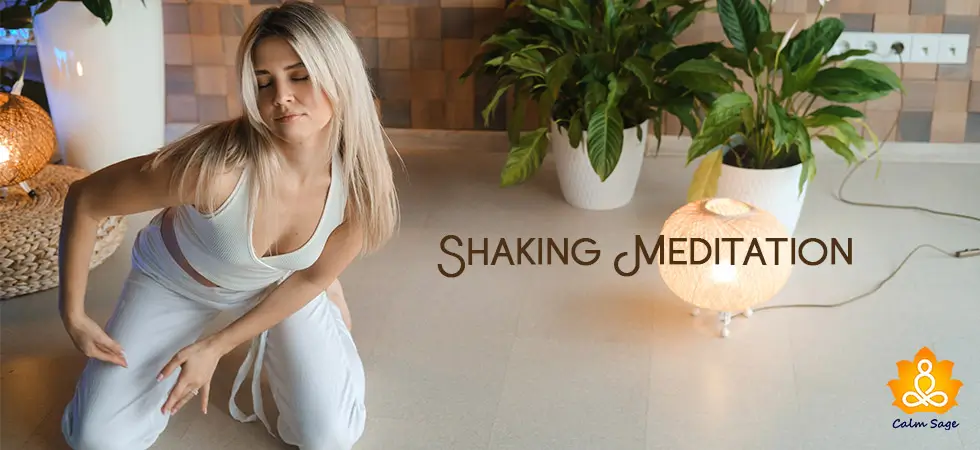Meditation For Anger Control: How To Control Your Anger With Meditation

Meditation has many benefits for our health and wellness but did you know that meditation can help with anger management too? Read more about how meditation for anger works.
Do you think you’ve learned all the benefits of meditation that are out there? Well, think again. The benefits of meditation are endless and among those is one that might be the most surprising yet effective. Meditation for anger management.
Anger is a powerful emotion and emotional response, one that can activate the fight-or-flight response. Meditation, in this instance, can disrupt the stress response and calm you down.
In a study I read, it was stated that during a session where the participants showed physical signs of anger, integrating meditation garnered an effective response. With just 20 minutes of meditation, people with higher levels of anger showed a calm and relaxed state with a normal heart rate, blood pressure, and breathing.
But how exactly does meditation work for anger? How does one integrate meditation to deal with anger?
Let’s take a look at the answers to these questions below!
Does Meditation Work For Anger?

Meditation is all about concentration – whether on an object, breathing, chants, movement, or sensation. Meditation isn’t all about clearing your mind and quieting your thoughts. It’s about training your mind to focus, balancing the nervous system, and activating the parasympathetic response to counter the stress response.
The stress you face can overtake your emotions and cause you to ruminate. When you’re stressed, it’s OK to react with emotions. Regularly practicing mindfulness meditation aka learning to stay in the moment and not let your emotions take over can help you keep a calm mind and a relaxed body, and reduce ruminating thoughts.
Meditation can work well for anger. First, it helps address the negative thoughts, feelings, and your emotional (impulsive) reaction. Second, anger causes us to become aggressive, and continuous ruminating and emotional high can keep anger alive and active.
What happens is that our brains are constantly on the watch for problems and negativity, so the amygdala is quick to register the negative emotions first, including anger. When this happens, the production of cortisol, noradrenaline, and adrenaline begins, further enhancing the anger response.
What meditation for anger does is that it interferes with this cycle and overrides the stress response triggering emotional self-regulation. Meditation for anger can help rewire the brain and change the way we typically respond to a stressful situation.
When you practice meditation regularly, it can help with anger management in these ways:
- Can help you stay in the present moment instead of in your negative thoughts
- Can help increase your emotional awareness and decrease the tendency to react impulsively
- Can help promote the ability to cope with distress effectively
- Can help strengthen the ability to be non-judgmental
- Can help widen our perspective and reduce catastrophizing
Mindfulness Techniques For Anger Management

Here are some mindfulness meditation techniques to help with anger management:
1. Watch Your Breath
In this meditation technique for anger management, you need to let your breathing be your guide. The sensations and the rhythm of your breathing are going to help you control your anger. How to practice?
- Inhale slowly while imagining a soothing white light filling your vision along with your normal breathing
- Hold your breath for two seconds, allowing the feelings of anger to gather as the white light calms you
- Exhale slowly and visualize the feelings of anger leaving your body along with your exhale
- Feel the way your body relaxes during the last step
2. Release The Emotion
The mindfulness technique focuses on physical sensations and signs of anger you’re holding on to. Anger is not just your thoughts and emotions but a physical manifestation as well. Focus on the physical manifestation and deliberately let go of your anger. How to practice?
- Breathe in and focus your attention on your feet. Wiggle your toes, flex, and imagine the muscles releasing the anger
- Move on to your legs. Notice any tightness or knots? Squeeze and release the muscles and imagine your legs releasing your anger
- Move on to your torso and repeat the same steps. Slowly move on to your neck, shoulders, arms, head, and fingers.
- Lastly, move on to your facial muscles. Scrunch them and release them as you let go of your anger.
3. Just Observe
In this mindfulness technique, you need to observe your thoughts and emotions, increase your awareness of them, and just let them be there without judgment. How to practice?
- Pick something specific to focus on, like the feel of your breathing or an object
- Notice the sensory details (sensations in your body, sound, color, shape, etc.)
- Notice when your thoughts wander; what feelings arise? How does your body respond?
- Allow these sensations to flow through your awareness and return to the sensations or objects you’ve focused on
- Repeat this cycle until the urge to react to the feelings stop
4. Breathe With Colors
When we talk about physically manifesting anger, what color comes to mind? Red? Well, for a long time, we’ve begun to associate the color red with anger and aggressiveness.
In this meditation technique, that’s what we need to do. Visualize color and learn to change your perspective. How to practice?
- Accept your feelings and visualize the color red filling your vision as you breathe in and painting everything around you, as you breathe out
- Focus on the sensations in your body
- Picture your favorite color, breathe it in, and allow it to fill your vision
- Exhale and allow the color to paint everything around you
- Visualize something that you associate with that color and hold on to that image in your mind as you continue to inhale and exhale
- Notice how the feelings of anger are now subtly shifting and changing perspective
- Repeat this until you feel calm
How To Practice Mindfulness Meditation For Anger?
Meditation might be simple but it can be challenging as well. It’s OK for your mind to wander about. It’s OK to let your emotions to the forefront but with a little practice, patience, and kindness, you can train your brain to be calm and collected.
To practice mindfulness meditation for anger, here are a few steps to follow:
- Start with 5 minutes a day and then move on to 10, 15, and 20 minutes, and so on. Remember, meditation is hard so give yourself some time to adjust to the practice.
- Be regular with the practice. You’ll see the benefits of meditation once you’re regularly practicing meditation.
- Pair your meditation practice with something you normally do as a part of your routine. Adjusting to meditation with something that is a habit can help solidify the practice.
- Be as comfortable as you can. You don’t have to sit in the lotus position. You can choose to sit on a chair as well. Try to be as relaxed as you can. You need to calm your emotions down, not aggravate them. As long as you’re uncomfortable, the emotions might not cool down easily.
- Avoid putting expectations on yourself or judging yourself. No meditation practice looks the same. What your meditation may look like, might be different from what mine looks like. Try to be you and not judge yourself for failing to concentrate.
- Don’t force yourself to pay attention. Be aware of the thoughts in your mind but try to guide your attention to the source of your concentration. Be patient and kind with yourself.
Wrap Up
If you’re experiencing anger issues then mediation can be a good self-help tool to help you control your anger. However, if your anger issues are chronic, then it is recommended that you speak to a professional counselor and get the right diagnosis and treatment. Sometimes, anger can be a symptom of an underlying mental health disorder.
I hope the above-mentioned mindfulness techniques for anger will help you with anger management. For more, you can write to us at info@calmsage.com or DM us on social media. You can also share your favorite meditation for anger management in the comments below.
Take Care!




















